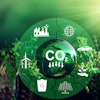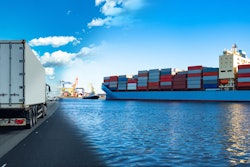
Today's enterprises face more pressure than ever to improve supply chain sustainability. Capital markets are requiring new sustainability-related disclosures, and news stories about the topic often make their way to the front page of media outlets, a sign that climate impact is no longer a topic companies can afford to overlook. For example, Amazon recently announced it will ask its supply chain to report emissions starting in 2024, the latest in a stream of enterprises to deepen its focus on supply chain sustainability that also includes CPG multinational Colgate and DiGiorno.
Investing in supply chain sustainability offers many significant benefits for enterprises beyond emissions reduction, including cost savings and risk and reputation mitigation. By making sustainability improvements such as reducing waste and improving energy efficiency, companies can lower operational expenses and enhance their bottom line.
When enterprises approach the topic of sustainability, they often do so from a high-level perspective, looking at overall traceability and transparency as well as third-party suppliers. However, in order to make true sustainability improvements, companies must focus on every aspect of the supply chain. Here are some technology strategies that companies can consider to improve sustainability across the whole supply chain, from sourcing and procurement to last-mile logistics:
Sourcing and procurement stage: Increase transparency with sensors. Several new technologies can improve sustainability during the sourcing stage of the supply chain, facilitating transparency and enabling enterprises to make sustainable sourcing decisions. For example, increasing the number of internet-connected sensors and devices can trace raw materials and products back to their source, ensuring responsible sourcing. They can also verify the origin of renewable energy certificates and ensure accurate reporting of renewable energy usage in the supply chain.
Production stage: Optimize energy consumption with AI. Artificial intelligence or machine learning (ML) software can analyze real-time data from sensors and machines to optimize energy consumption during the production process. By identifying inefficiencies and recommending adjustments, AI helps reduce energy waste, leading to a more sustainable production operation. These sustainable supply chain practices can lead to cost savings in the long run: by improving energy efficiency, companies can save money in addition to energy resources, which is highly relevant and useful as enterprises confront today's challenging landscape of raw material shortages and supply chain snags.
Distribution stage: Optimize routes with advanced logistics. Route planning software powered by AI and data analytics can figure out the most efficient delivery routes, thus minimizing transportation distance, fuel consumption, and emissions. This results in a more sustainable distribution process where less energy is wasted on logistics. In addition, companies can leverage data analytics to monitor distribution operations. By tracking key performance indicators (KPIs) related to efficiency and environmental impact, companies can identify areas for improvement and optimize their distribution processes.
Reverse logistics stage: Think about circularity. Companies should design products with the circular economy in mind, considering how even when products are tossed out by the end user, they can be reused. When it comes to companies producing industrial products such as chemicals, they can work with materials that are considered waste. Software can help with this process of material recovery, helping engineers figure out how to implement processes to recover more valuable materials from products that were previously considered waste. By using repurposed materials in the manufacturing of new products, enterprises can reduce the need for virgin materials and mined components.
Supply chain sustainability is an incredibly crucial aspect of modern business operations. It is an all-encompassing approach to managing the entire supply chain network in a way that meets the needs of the present without compromising the ability of future generations to meet their own needs. It involves not only ensuring the availability of resources, but also promoting the responsible use of these resources, which in turn, can help to reduce waste and pollution. By implementing sustainable supply chain practices, businesses can not only contribute to a healthier environment but also ensure the longevity of their operations while maintaining stakeholder trust and satisfaction over the long term. This, in turn, can lead to better brand reputation, increased customer loyalty and ultimately, greater financial success.
Moreover, a sustainable supply chain strategy fosters long-term business success by creating a competitive advantage for companies that prioritize emissions reduction. Consumers are increasingly demanding environmentally responsible products and are willing to pay more for them, making sustainability a key factor in purchasing decisions. By implementing sustainable practices throughout the supply chain, companies can differentiate themselves from their competitors and attract more customers.
In order to achieve supply chain sustainability, companies must adopt a holistic approach that considers all aspects of the supply chain, from sourcing raw materials to delivering the final product. This requires collaboration with suppliers, customers, and other stakeholders to ensure that sustainability is integrated into every aspect of the supply chain. By doing so, companies can ensure that they are well-positioned to thrive in an increasingly environmentally conscious and socially responsible world.



















